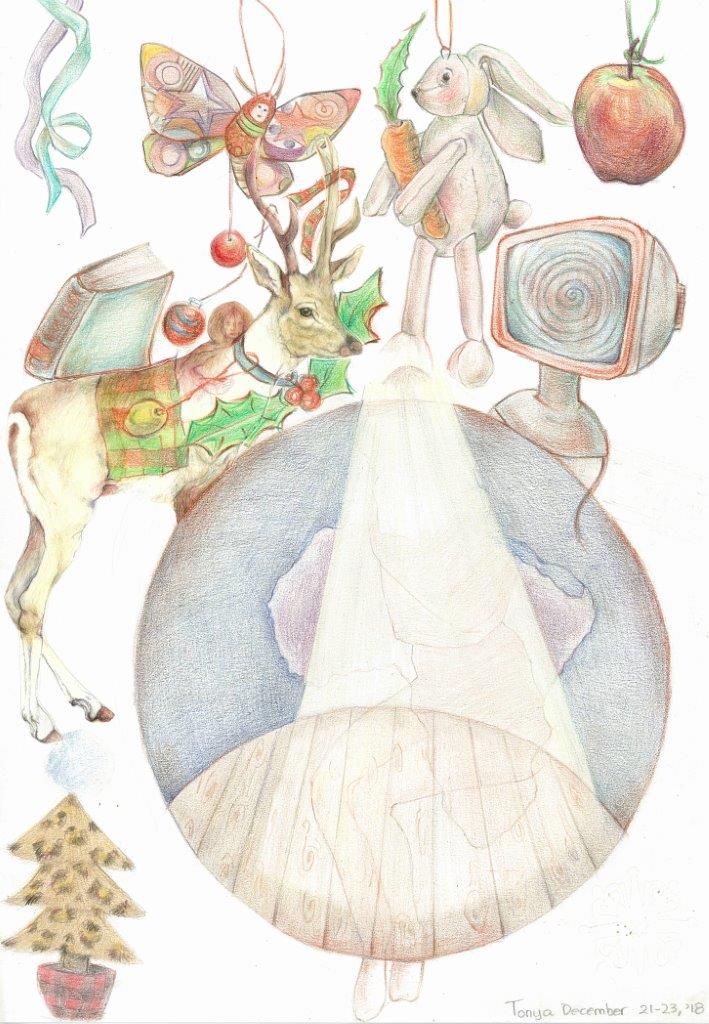A drawing, an exercise and a review from a podcast on empathy
“Without expanding empathy beyond our in-groups and borders, civilization as we know it will not survive. Empathy training is the key transformative education” (Dr Helen Reiss, The Empathy Effect)
 Signing a vision contract
Signing a vision contract
All animals have primitive purposes and directionality, but we humans also seem to have what one may call a soul purpose, a deeper desire that is connected to our individual signature and what we came here to be and do. One way of remembering our deeper soul longings is maybe to create our own vision contract, a contact with ourself, and as Kerry Tepedino suggests sign it and put it up where we can see it each morning. It is perhaps more important than contracts we sign with others, like with our employers, who may not remember the terms or even their signing and maybe the fact that often they delegate others to sign their contracts….. Yet many of us live our lives bound by roles and agreements that do not serve or protect us…. So, as the year comes to an end perhaps writing out our statement can increase our agency and clarity and inspire action for change
On empathy from Insights at the Edge. Sounds True, December 18th, 2018)
I really look forward to Insights at the Edge series, and this week one of the talks was about empathy. Dr Helen Reiss has created a process to help people regulate or tap into their empathic capacity. She and Tami Simon discuss the importance of the training of empathy in education, the medical community and other fields, emphasizing why these skills are necessary for the survival of human civilization. She talks about how important empathy training is in schools for young children, especially when it comes to developing empathy for children who are different and to teaching children to “connect across differences.” Dr Reiss notes that the neuroscience of empathy suggests that humans are wired for empathy and hardwired to appreciate emotions, and also, that the suffering of others and their emotions ‘land on our own brains through specialized neurons and mirror circuits and shared neural circuits in our brains’. The process she has developed uses the acronym EMPATHY. Briefly, “E” stands for “eye contact and discerning of eye colour”. She says that from the moment an infant opens its eyes and can see its mother the bonding hormone, oxytocin, is released when the two gaze at each other and that this physiologic hormonal response doesn’t end at infancy. So, through eye contact and meeting someone’s gaze, we actually, first of all, show that we’ve actually met that person, and also, findings from scientific research suggest that oxytocin is released, Then “M” stands for “Muscles of facial expression.”, which suggests that peoples’ faces are roadmaps of emotions, and therefore, it is important to look people in the face when we are talking to them to detect their feelings and respond in an attuned way. “P” stands for “Posture.” Dr Reiss suggests that the most important thing is to be at eye level when talking to someone, not looking down or up to them to avoid a mismatch in our ability to connect. “A” is for “Affect” and T is for “Tone of voice.” She notes that we convey much more than 85 percent of what we’re saying to our tone of voice. We can use the same exact words, but they can mean different things, depending on our tone. “H” stands for “Hearing the whole person” because as she explains, for instance, ‘in healthcare, if we were just listening to a patient talking about their ailment or their injury or their disease, we might lose a focus on hearing them as a whole person; what’s going on in their lives….. so we don’t lose sight of the bigger picture’. Finally, “Y” stands for “Your response, which has to do with asking questions like: “Are you comfortable with this person? Are you in tune? Does it feel like everything is going well?” Because most feelings are mutual, and if you’re feeling good, chances are the other person is. But if you’re……just feeling a little out of sorts, you might be picking that up from the other person’. Finally, they touched on the state of incivility, bullying, taunting others, lack of sensitivity to difference and the corrosive effects of these kinds of deeply troubling norms that can escalate to hate crimes. She concluded that ‘I think many people recognize these tactics as being not just offensive, but really morally challenged, and we need to have an answer to these kinds of new norms that we’re seeing every day on television and in the news, and a call for people to unite as one humanity’. (https://www.soundstrue.com/store/weeklywisdom?page=single&category=IA)
